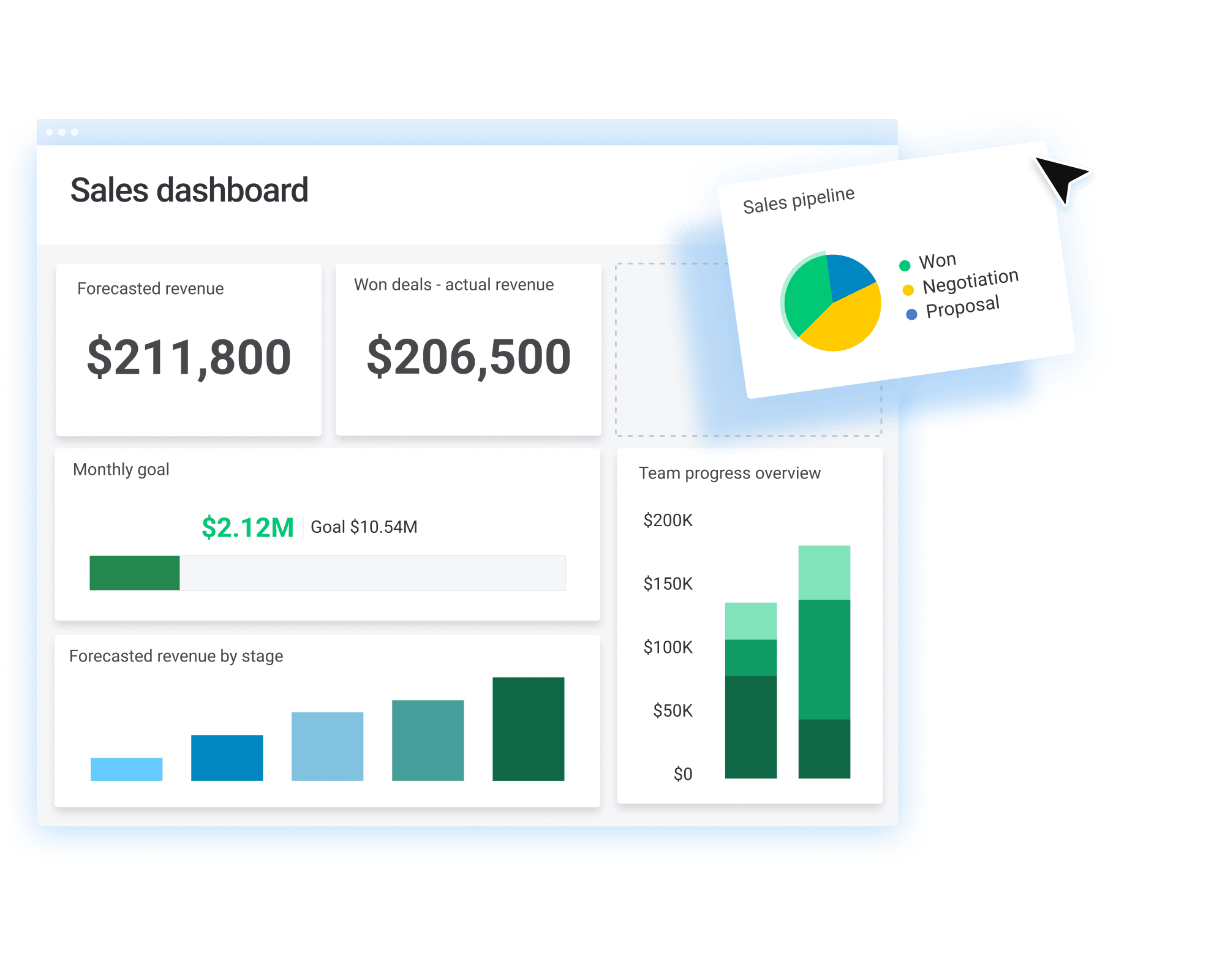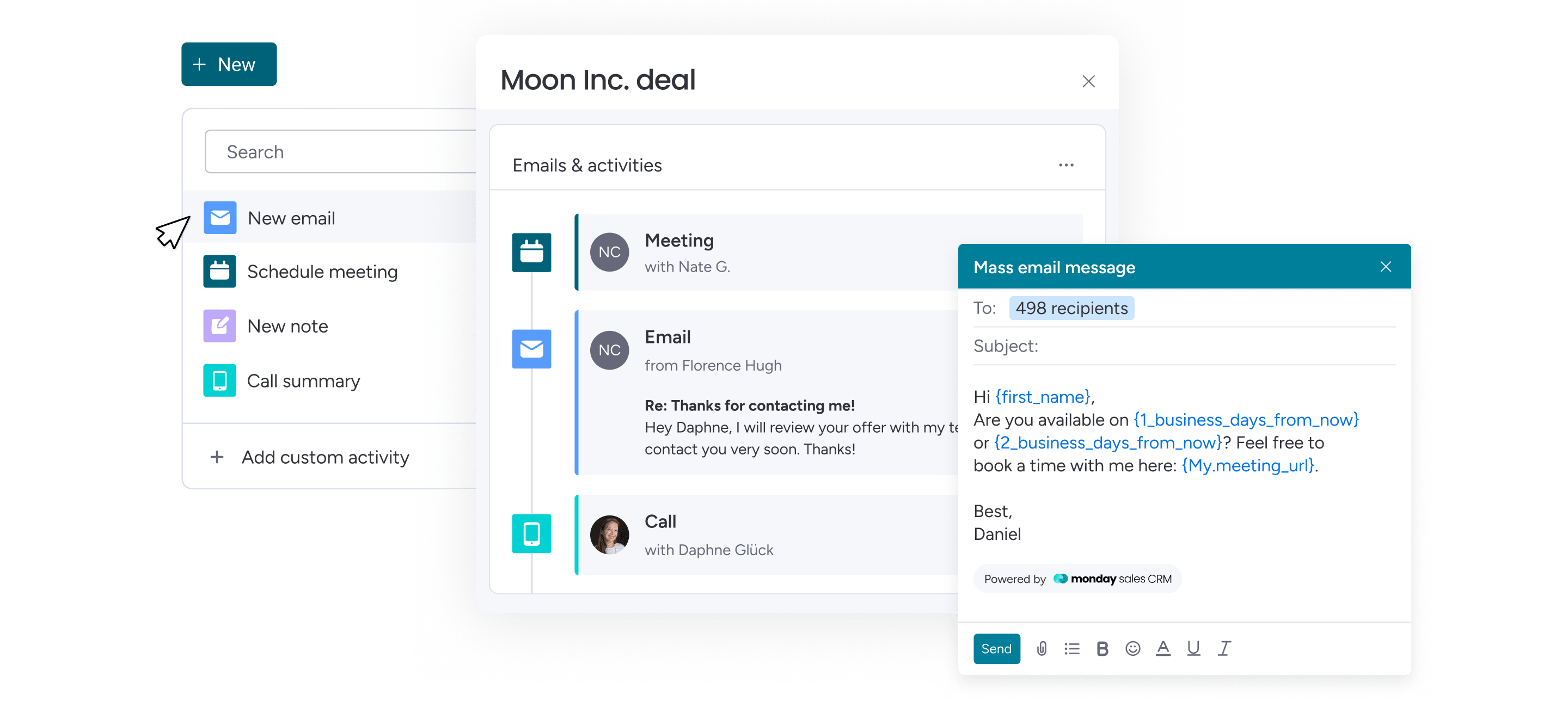Email marketing is a crucial part of any sales strategy, but are you using it to its full potential?
In this guide, we’ll explore how you can unlock the power of email A/B testing and get to know the basics. You’ll come away with a better understanding of how to improve your email marketing and increase your ROI.
Try monday sales CRMWhat is email A/B testing?
Email A/B testing, also known as split testing, is a process of testing different versions of an email message to see which one performs better. In an A/B test, you send two versions of the same email to two different groups of recipients.
The only difference between the two versions is one variable, such as the subject line or the call-to-action (CTA). By comparing the performance of the two versions, you can determine which variable is more effective at achieving your goal.
Why use email A/B testing?
The benefits of email A/B testing are countless. Here are a few reasons why you should use it:
Better open rates: By testing different subject lines and preview text, you stand to increase the number of people who open your emails.
Improved click-through rates: When you test different CTAs, links, or content, you increase the number of people who click on your links.
Additional engagement: By testing different elements of your email, you can increase how much subscribers engage with your email, improving overall performance.
Are there different types of email a/b tests?
There are several types of email A/B tests worth experimenting with. This list will help you figure out what type of email a/b testing is most effective for you.
Multivariate testing: This type of test allows you to test multiple variables at once, such as subject line, content, and CTA.
Subject line testing: This type of test involves testing different subject lines to determine which one results in more opens.
Testing content: This involves testing different types of content to see which one results in more clicks.
Preview text testing: This involves testing different email inbox preview text to discover which one results in more opens.
CTA testing: Testing different calls-to-action will indicate which one results in more clicks.
Email template testing: Test different email templates to find out which one results in more engagement.
Testing email design: Testing different email message designs helps determine which one results in more engagement.
Personalization testing: Think about testing different levels of personalization to find out which one results in more engagement.
Timing tests: This type of test involves testing different times of day or days of the week to learn which one results in more opens and clicks.
Tip: You can organize your email/ab testing designs and results in one place with monday sales CRM software.
Try monday sales CRM5 best practices for email A/B testing
There’s a method to the madness when it comes to A/B testing. Keep the following in mind:
1. Set clear goals
Setting clear goals is essential for a successful email A/B testing campaign. Clearly defined objectives help you determine which variables to test and what results you want to achieve.
For example, if your objective is to increase your email open rate, you might test different subject lines to see which one generates the highest open rate. On the other hand, if you are testing subject lines, your goal might be to increase open rates by 10% or more.
2. Test one element at a time
By testing only one variable at a time, you’re able to accurately attribute any changes in performance to that specific variable. [Twitter]Testing one variable at a time is crucial because it allows you to isolate the impact of each variable on your email’s performance. [/Twitter]
For example, if you test multiple variables at once, you won’t know which variable caused a change in performance. Plus, if you are testing different calls-to-action, only change the wording of the call-to-action and keep everything else the same, including the subject line, body content, and design.
3. Analyze and track results
Analyzing and tracking results is crucial for determining which test variation performs better. By using data analytics, you measure the performance of each test and draw conclusions from the results.
Keep in mind that you need to monitor the results throughout the testing period and adjust the test as needed to make sure you’re working with accurate results. As an example, if you are testing different subject lines, track the open rate of each email variation and compare the results in a tool like monday sales CRM to determine which subject line performs best.
4. Don’t be afraid to experiment
Testing new variables and combinations of variables is critical to discovering what works best for your audience. Be open to testing new ideas and don’t be afraid of failure — it’s one of the best ways to learn what is and isn’t working.
For example, if you’ve always used a specific email design, consider testing a new design to see if it generates better results, like more engagement. Just like you would do with a landing page or website design.
5. Understand what drives your audience
Understanding your audience’s preferences, pain points, and demographic information is critical if you want to maximize the effectiveness of your email campaigns. By knowing what drives your audience, you can tailor your email content to their needs and preferences, resulting in higher engagement rates that lead to more sales.
For example, if your audience consists of busy professionals, consider testing different send times to see when they are most likely to engage with your emails. Once you’ve tested different variations of your email, tools like monday sales CRM make it easy to create a shareable template you and the rest of your team can use for their next campaign.
Design a worthwhile process for email A/B testing with monday sales CRM
monday sales CRM system is a powerful tool for managing your sales pipeline, tracking leads, and analyzing customer data. By using monday sales CRM with your email A/B testing strategy, you can gain valuable insights into how your emails are performing and make data-driven decisions to optimize your sales funnel.
One way to do this is to use monday sales CRM to segment your email lists based on customer behavior and preferences. For example, you can create separate lists for customers who have previously purchased from you and those who have not. By doing so, you can tailor your email messages and A/B tests to each segment’s unique needs and preferences, increasing the likelihood of engagement and conversion.

Using monday sales CRM with your email A/B testing strategy can help you to optimize your sales funnel, improve engagement and conversion rates, and better understand your audience. By using data-driven insights and best practices, you can take your email marketing efforts to the next level and achieve consistent success.
The following email features help you get closer to your customer:
Email sync: Sync your Gmail or Outlook account to send and receive emails, or automatically track all your emails within monday sales CRM with email marketing.
Email templates: Send personalized emails that autofill based on contacts’ information to save time.
Email tracking: Get notified when a lead opens or replies to an email, so you can follow up immediately.

Jumpstart your campaign performance with email A/B testing
Email A/B testing is a powerful tool that helps you optimize your email campaigns and maximize your ROI. By understanding the basics of how to set up an experiment, choose variables for comparison, and analyze results, you stand to unlock the power of email A/B testing for more effective campaigns.
With the right strategies in place, you will increase success rates and make sure your emails are as effective as possible. So don’t wait, start testing today and see the benefits for yourself!
Frequently asked questions
Who should use email A/B testing?
Marketers, sales reps, and operations teams to optimize email campaigns.
How do you do email A/B testing?
To run A/B email testing, create two versions of an email, send to different groups and compare results.
What are the benefits of email A/B testing?
The benefits of email A/B testing include improved engagement and ROI as well as a better understanding of your customers.

